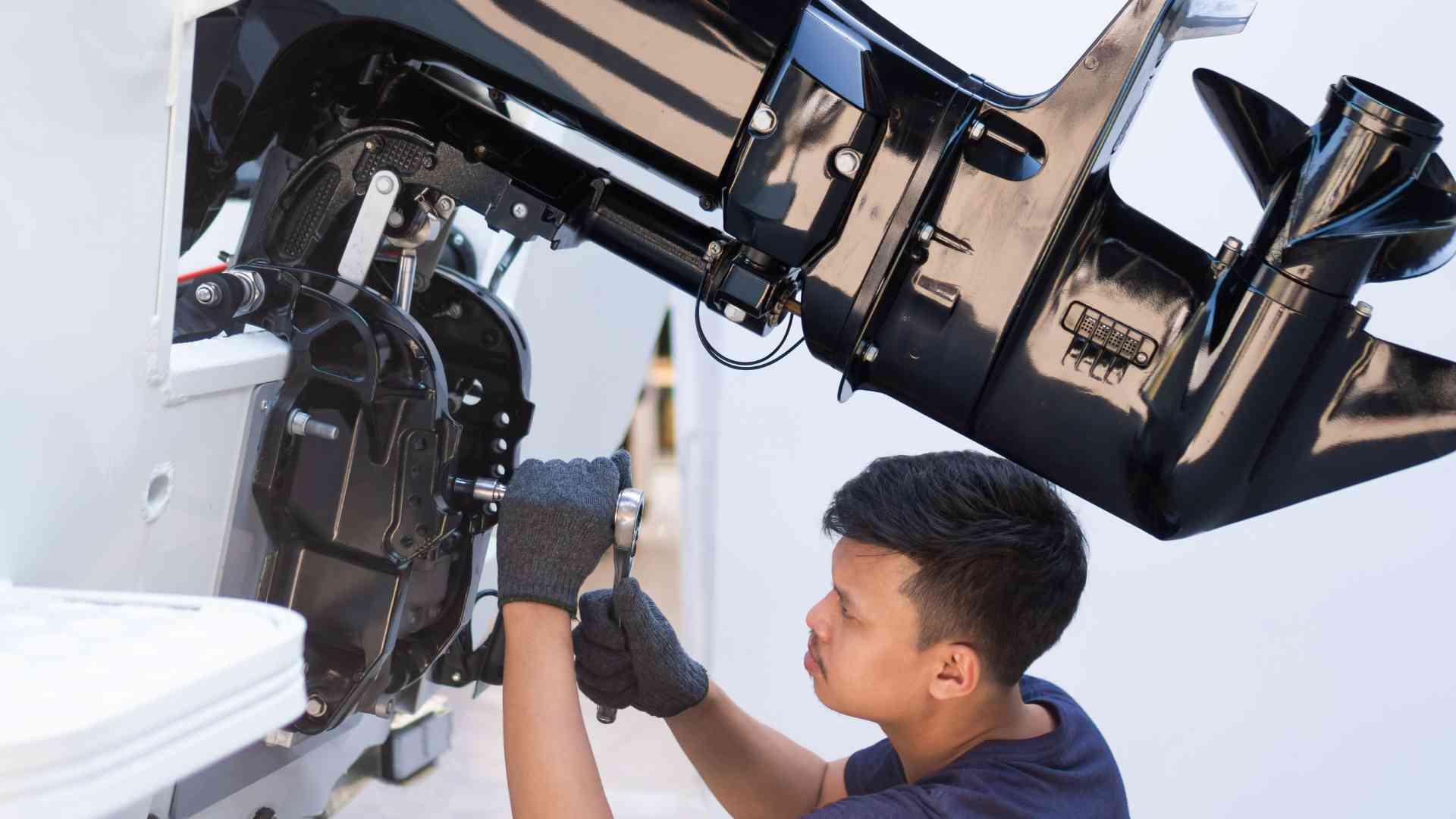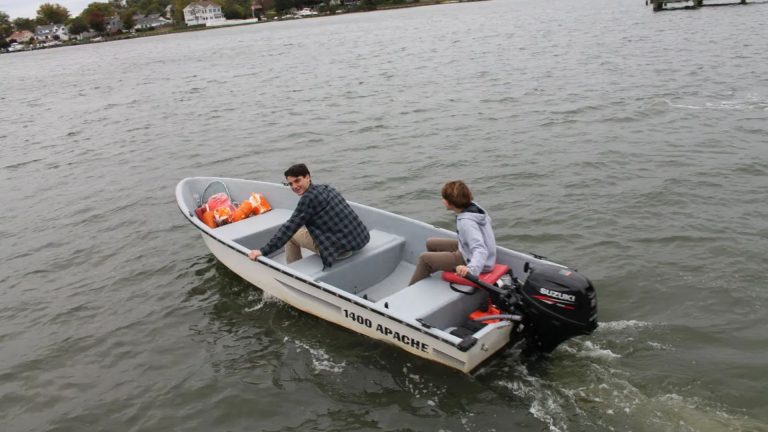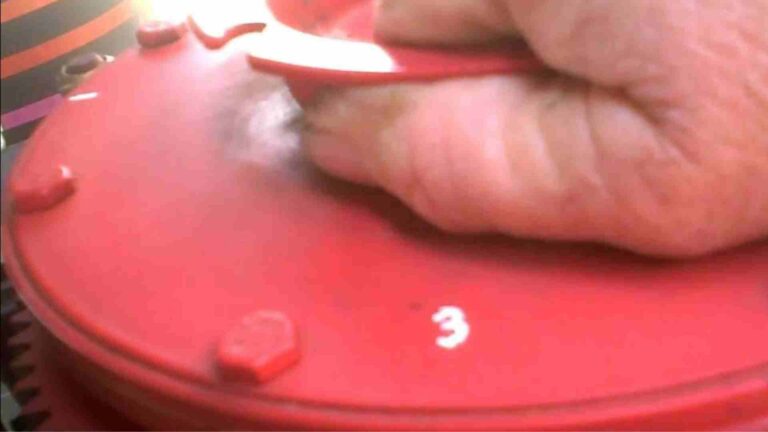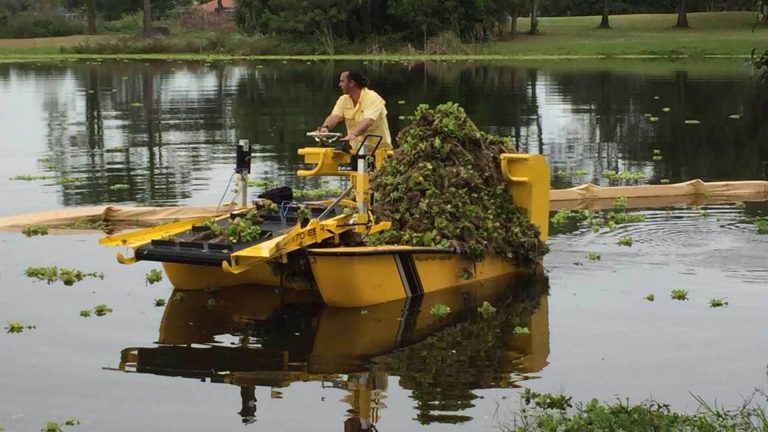How to Troubleshoot Boat Electrical Problems?
A well-functioning electrical system is the heartbeat of any boat, vital for powering essential navigation equipment, communication devices, lighting, and even the comforts of modern amenities. The allure of the open water, however, can quickly dim when faced with electrical glitches that disrupt the seamless operation of a vessel. Imagine a navigation system failing amidst a vast expanse of ocean or lights flickering in the midst of twilight, revealing the significance of a dependable electrical setup.
Electrical issues on boats can indeed be exasperating, but they need not cast a shadow over your maritime adventures. With the right knowledge and approach, these problems can be not only diagnosed but effectively resolved. In this comprehensive guide, we embark on a journey to assist boaters in troubleshooting and tackling the common electrical dilemmas that arise on their vessels. From deciphering circuit intricacies to unraveling the mysteries of battery malfunctions, we provide insights and solutions to empower boaters with the confidence to navigate both their ships and the realm of electrical systems.
Safety First
Safety stands as an unwavering cornerstone when delving into the intricate realm of boat electrical systems. As captivating as it is to unravel the mysteries of circuits and wires, one must remember that mishandling these components can lead to dire consequences.
Before even considering troubleshooting, it is imperative to disconnect the boat’s batteries and ensure a complete disconnection from shore power. This initial step acts as a protective shield against potential electrical shocks and fires that could result from accidental contact with live circuits. The tranquil lapping of waves against the hull should not lull boaters into complacency; rather, it should serve as a reminder of the unpredictable nature of the sea and its inherent risks.
Just as a captain navigates through treacherous waters with caution, so must a boater navigate through their vessel’s electrical infrastructure. By adhering to these safety precautions, enthusiasts can embark on the journey of diagnosing and rectifying electrical issues, assured that they are safeguarding not only their boat but also their well-being against the unseen currents of electrical hazards.
Understand the Basics of a Boat
At the core of every boat’s operational prowess lies its electrical system—a complex web of components working in harmony to power various functions. The heartbeat of this system is the battery, storing the energy required to ignite engines, illuminate cabins, and run essential devices. Connected by a network of wiring, switches, fuses, and circuit breakers, this intricate arrangement ensures seamless functionality.
A strong grasp of these system basics is paramount for effective troubleshooting. Understanding the role of each component enables boaters to identify potential culprits when issues arise. Faulty wiring, blown fuses, or tripped circuit breakers can disrupt the flow of energy like a stormy sea.
To navigate these intricacies, boaters should consult their vessel’s manual and electrical diagrams—treasure maps to deciphering the electrical landscape. These resources shed light on the system’s blueprint, helping pinpoint locations of vital components and offering insights into their interconnections. Just as a navigator consults charts before setting sail, a boater should consult these references before embarking on any electrical expedition.
In essence, a boat’s electrical system is akin to a constellation of stars guiding it through the darkness. With a solid grasp of its components and the guidance of manuals and diagrams, boaters can chart their course towards resolving electrical dilemmas and enjoying smooth sailing on electrifying waters.
1. Start with the Obvious
When navigating the labyrinthine world of boat electrical systems, it’s often wise to start with the obvious. Simple issues can wield a surprising amount of influence over a system’s performance, and addressing them can swiftly restore smooth sailing. Loose or corroded connections, blown fuses, and tripped circuit breakers frequently stand as the culprits behind perplexing electrical problems.
Step 1: Inspect Connections
Begin by visually inspecting all electrical connections. Corroded or loose connections can disrupt the flow of electricity. With the power source disconnected, carefully examine wires, terminals, and connectors. Gently tighten any loose connections and clean off any corrosion using a wire brush or an appropriate cleaning solution.
Step 2: Check Fuses
Blown fuses are often at the heart of power interruptions. Locate the fuse box, usually near the battery or in a control panel. Using the manual or diagram, identify the specific fuse corresponding to the malfunctioning circuit. Replace any blown fuses with new ones of the same rating.
Step 3: Reset Circuit Breakers
Tripped circuit breakers act as safety measures against overloads. Find the circuit breaker panel and look for any breakers in the “off” position or between the “on” and “off” positions. Flip the breaker fully to the “off” position and then back to the “on” position to reset it.
Taking these initial steps might seem like elementary measures, but they often hold the key to swiftly resolving electrical hiccups. A solid foundation of electrical troubleshooting starts with these basics. By paying heed to the seemingly mundane, boaters can often steer their vessel away from the tumultuous waters of confusion and back into the calm seas of functional electrical systems.
2. Check the Boat Batteries
When grappling with perplexing electrical dilemmas on a boat, it’s prudent to turn your attention to the heart of the matter: the batteries. These powerhouses of energy often lie at the root of many electrical problems that mar smooth sailing.
Understanding the Role of Batteries:
Boat batteries serve as the life force for a myriad of onboard systems, from ignition to lighting. When batteries are low or dead, a domino effect of issues can cascade throughout the vessel. One of the most immediate repercussions is an inability to start the engine, leaving you adrift in a sea of frustration.
Checking Battery Voltage and Connections:
To gauge the health of your batteries, use a voltmeter to measure their voltage. A fully charged battery typically reads around 12.6 to 12.8 volts. Any reading significantly lower indicates a need for charging or replacement. Next, inspect the battery connections for corrosion or looseness. Corrosion can be removed with a mixture of baking soda and water, followed by a thorough rinse and terminal tightening.
Charging and Replacement:
If the battery voltage is low, connect it to a proper battery charger. Follow manufacturer instructions and avoid overcharging, which can damage the battery. If a battery consistently fails to hold a charge, it may be time for replacement. Select a battery of the correct type and capacity for your boat’s needs.
A vigilant eye on battery health can stave off a multitude of electrical woes. In a boat’s intricate ecosystem, batteries serve as the nucleus, influencing everything from propulsion to comfort. By mastering the art of battery maintenance, boaters can ensure their electrical systems hum with vitality, ready to navigate the open waters with unwavering vigor.
3. Test Switches and Controls

In the intricate dance of boat electrical systems, switches, buttons, and controls hold the power to orchestrate a seamless performance. Their functionality is paramount for proper operation of lights, pumps, and an array of other vital electrical components. Ensuring these switches are in optimal condition can be the key to maintaining a smoothly sailing vessel.
Understanding the Impact of Faulty Switches:
A seemingly innocuous faulty switch can wield a significant impact on the boat’s operational integrity. Non-functional lights can compromise visibility during night voyages, and inoperative pumps can lead to flooding or drainage issues. A malfunctioning switch can effectively halt the rhythm of your onboard functions, disrupting both convenience and safety.
Testing with a Multimeter:
To unveil the hidden nuances of switch health, a multimeter becomes an invaluable tool. Begin by disconnecting power to the circuit and removing the switch cover, if applicable. Set the multimeter to the resistance or continuity mode. Place one probe on the common terminal of the switch and the other on the terminal corresponding to its on/off state. If the meter displays continuity when the switch is toggled, it’s in working order. If not, it’s time for a replacement.
Replacing Faulty Switches:
Should a switch fail the multimeter test, it’s prudent to replace it promptly. Choose a replacement switch with the same specifications and wiring configuration. With power disconnected, remove the old switch and connect the wires to the new one, mirroring the original arrangement. Secure the new switch in place and restore power to the circuit to verify its functionality.
Just as a captain relies on a well-calibrated compass, a boater depends on operational switches to navigate the sea of electrical intricacies. By mastering the art of switch testing and replacement, enthusiasts can empower themselves to steer their vessel with precision, ensuring that the symphony of their electrical systems resonates harmoniously.
4. Inspect Wiring of Boat
Delving into the realm of boat electrical systems involves a meticulous inspection of the unseen veins that carry the life force of energy: the wiring. These hidden pathways are not only conduits of power but also potential points of vulnerability that demand vigilance.
Importance of Wiring Inspection:
Wiring serves as the nervous system of your boat’s electrical network. Over time, wear, exposure to elements, and corrosion can undermine its integrity. Inspecting wiring is crucial to preempt electrical issues that can lead to inconvenience, safety hazards, and even potential disasters.
Impact of Worn or Damaged Wires:
Worn or damaged wires are silent saboteurs, capable of causing intermittent or total electrical failures. They can lead to flickering lights, non-operational devices, or, in more dire circumstances, trigger short circuits or fires. Treating wiring issues with due seriousness is thus paramount.
Using a Multimeter for Testing:
Employing a multimeter, the stalwart ally of electrical troubleshooting, is the first step in diagnosing wiring problems. With power disconnected, set the multimeter to the continuity or resistance mode. Touch one probe to the wire’s end and the other probe to the other end. If the multimeter shows continuity or a low resistance value, the wire is intact. If not, it indicates a break in the circuit.
Replacing Damaged Wiring:
Once a faulty wire is identified, replacement becomes imperative. Cut out the damaged section, ensuring ample extra length for splicing. Strip the insulation from the ends of the cut wire and the replacement wire. Twist the exposed ends together, covering them with heat-shrink tubing or electrical tape for insulation. Recheck continuity with the multimeter to verify the repair’s success.
Much like a ship’s hull shields against the sea’s elements, maintaining the integrity of wiring protects against the hazards of electrical malfunctions. By embarking on regular inspections, conducting tests, and addressing issues promptly, boaters can ensure that their vessel’s electrical systems traverse the tides of time with unwavering reliability.
5. Multimeter in Troubleshooting Boat Electrical Systems
In the realm of troubleshooting boat electrical systems, a multimeter emerges as a versatile and indispensable tool—an enchanting wand that unveils the hidden mysteries of voltage, current, and resistance. With its aid, boaters can navigate through the intricate circuits and currents, transforming potential chaos into clarity.
The Multimeter’s Role:
A multimeter is akin to an electrical detective, capable of measuring the fundamental pillars of electricity: voltage, current, and resistance. Its dexterity in quantifying these parameters allows boaters to pinpoint the origins of issues, unveil hidden faults, and validate the health of various components.
Measuring Voltage, Current, and Resistance:
- Voltage (Volts): Measuring voltage helps gauge the energy potential across a component or circuit. It’s essential for diagnosing power supply issues or irregularities.
- Current (Amperes): Current measurement provides insights into the flow of electricity through a circuit, aiding in identifying overloads or underperforming components.
- Resistance (Ohms): Resistance measurements help unveil the integrity of wires, switches, and other components, indicating breaks or weak points.
Step-by-Step Instructions:
- Setting Up: Ensure the multimeter is set to the appropriate measurement mode (voltage, current, or resistance) and range. Start with the highest range and gradually lower it for accurate readings.
- Voltage Measurement: Place the red probe on the positive terminal and the black probe on the negative terminal of the component or circuit. Read the displayed value.
- Current Measurement: Insert the red probe into the multimeter’s current measurement port (often labeled “A”). Break the circuit and connect the multimeter in series with the component. Ensure the current flows through the multimeter. Read the displayed value.
- Resistance Measurement: Disconnect power and ensure the component is not connected to any circuit. Connect the red and black probes to the component’s terminals. Read the displayed value.
Troubleshooting with a Multimeter:
- Testing a Switch: Set to continuity mode. Touch the probes to the switch terminals. If the multimeter beeps or shows continuity, the switch is functional.
- Checking for Short Circuits: Set to resistance mode. Touch the probes at both ends of a wire or component. A very low resistance value indicates a short circuit.
- Identifying Open Circuits: Set to resistance mode. Touch the probes at both ends of a wire or component. An infinite resistance value indicates an open circuit.
In the labyrinth of boat electrical systems, the multimeter acts as a guiding light, illuminating the path to solutions. By mastering its usage, boaters can perform feats of diagnosis that transform the complex into the comprehensible, ensuring their vessel’s electrical symphony continues to resonate harmoniously.
6. Addressing Grounding Issues on a Boat

In the intricate dance of boat electrical systems, grounding issues stand as potential disruptors, capable of throwing off the rhythm of even the most harmonious setup. These issues often lurk beneath the surface, silently sabotaging the performance of electrical components.
Impact of Grounding Issues:
Grounding is the vital link that completes the circuit, allowing electricity to flow properly through a system. Poor grounding can lead to a host of electrical problems, as it creates an unreliable pathway for current to return to its source. This can result in erratic behavior of electrical components, ranging from flickering lights and malfunctioning devices to more serious issues like voltage spikes or even electrical fires.
Erratic Behavior of Electrical Components:
Electrical components on a boat, like lights, pumps, and communication devices, rely on consistent and stable currents. Poor grounding can introduce irregularities in this flow, causing these components to operate intermittently or inefficiently. It’s akin to a shaky foundation causing a house to exhibit unpredictable structural issues.
Inspecting Grounding Connections:
Regularly inspecting grounding connections is paramount for maintaining a reliable electrical system. Begin by identifying the grounding points throughout the boat, including the engine, electrical panel, and other crucial components. Examine the connections for signs of corrosion, rust, or looseness. Corrosion can be removed using a wire brush or appropriate cleaning solution. Ensure that connections are tight, providing a solid and low-resistance path for current to return.
Much like a sailor relies on secure moorings to weather a storm, a boat’s electrical components depend on proper grounding for stability and reliability. By keeping a watchful eye on grounding connections and addressing issues promptly, boaters can ensure that their vessel navigates through the sea of electrical intricacies with unwavering certainty.
7. Isolating Component Failures
Isolating component failures in a boat’s electrical system is akin to unraveling a complex puzzle. It involves a methodical approach to uncovering the root cause of an issue by systematically testing and evaluating individual components. By disconnecting and examining these elements one by one, boaters can unveil the true source of the problem.
The Process of Isolation:
- Disconnect Power: Begin by disconnecting the power source to the entire system to ensure your safety while working on individual components. This prevents accidental shocks or short circuits.
- Disconnect Components: Identify the specific components relevant to the issue you’re troubleshooting. For instance, if you’re facing lighting problems, focus on lights and related wiring.
- Test Components: Reconnect power and test each individual component one at a time. By doing this, you can identify whether the issue lies within a specific component or its associated wiring.
Testing Individual Components:
1. Testing Lights:
- Disconnect the light from its power source.
- Use a multimeter to test the continuity of the light bulb’s filaments. A broken filament indicates a faulty bulb.
- Test the socket by setting the multimeter to resistance mode and touching one probe to the center contact and the other to the socket’s outer edge. A reading close to zero indicates a functioning socket.
2. Testing Pumps:
- Disconnect the pump from its power source.
- Connect the pump directly to a power source (if applicable) to see if it operates independently. This tests the pump itself, separate from other potential issues like wiring or switches.
3. Testing Accessories:
- Disconnect the accessory (e.g., GPS unit, radio) from its power source.
- Test the accessory by connecting it to a known good power source (e.g., a separate battery or power outlet) to confirm its functionality.
4. Observing Behavior:
- Pay attention to the behavior of each tested component. If it functions correctly when connected to a separate power source, the component itself is likely not the issue. If it still doesn’t work, the component might be faulty.
By systematically testing individual components, boaters can eliminate potential suspects and narrow down the scope of their investigation. This process of isolation not only helps in pinpointing the source of the problem but also guides the repair or replacement process, ensuring a swift return to smooth sailing on electrifying waters.
8. Sometimes, Complex Electrical Issues May Require Professional Assistance
In the realm of boat electrical systems, there are instances when the currents of complexity surge beyond the scope of personal troubleshooting. In such scenarios, seeking professional help becomes not just a suggestion but a prudent choice to ensure the integrity of your vessel’s electrical setup.
Complexity Demands Expertise:
While basic troubleshooting can often resolve simple issues, complex electrical problems can be like navigating uncharted waters. Systems intricately woven with multiple components, circuits, and connections may present challenges beyond a layperson’s expertise. When faced with mysterious malfunctions or extensive electrical overhauls, the knowledge and experience of a seasoned marine electrician become invaluable.
Importance of an Experienced Marine Electrician:
Marine electricians possess specialized training in the intricacies of boat electrical systems. They’re adept at diagnosing complex issues, identifying the root causes, and implementing effective solutions. From diagnosing multifaceted wiring issues to addressing elusive intermittent problems, their skill set is tailored to the idiosyncrasies of boat electrical systems.
Prioritizing Safety and System Integrity:
The safety of your boat, passengers, and yourself is paramount. An electrical mishap can lead to not only inconvenience but also potentially hazardous situations, such as electrical shocks or fires. A professional marine electrician adheres to safety protocols, ensuring that repairs, replacements, or installations are carried out with precision, minimizing risks and maintaining the integrity of your boat’s electrical system.
Just as a skilled captain steers through challenging waters, a professional marine electrician guides your boat’s electrical system through the complexities of technical issues. When the currents of complexity become overwhelming, enlisting their expertise ensures that your vessel sails safely and smoothly, allowing you to enjoy your maritime adventures with peace of mind.
Importance of Preventive Maintenance to Avoid Future Electrical Issues

Preventive maintenance stands as a beacon of foresight in the realm of boat electrical systems, offering a compass to navigate the treacherous waters of potential issues. By dedicating time and effort to regular upkeep, boaters can chart a course towards smoother, safer, and more reliable voyages.
The Significance of Preventive Maintenance:
Proactive maintenance is akin to fortifying the vessel against the unseen tides of electrical woes. It’s not just about addressing existing issues; it’s about averting potential problems before they materialize. Regular maintenance ensures that your boat’s electrical system remains a well-tuned symphony, orchestrating the smooth operation of various components.
Periodic Inspection and Cleaning:
Regularly inspecting and cleaning connections is akin to sweeping the decks for debris. Corroded or loose connections can disrupt the flow of electricity, leading to malfunctions or even safety hazards. A simple cleaning with a wire brush or appropriate solution can breathe new life into these crucial connections.
Replacing Worn Components:
Just as sails wear out over time, electrical components also age and degrade. Worn-out switches, frayed wires, and aging batteries can become sources of trouble. Replacing these components before they fail outright can prevent unwelcome surprises during your journeys.
Well-Maintained Electrical System:
A well-maintained electrical system becomes a steady companion, ensuring that your navigational equipment guides you with accuracy, your lights illuminate the darkest nights, and your pumps keep the vessel dry. Regular checks, proactive replacements, and periodic servicing contribute to the overall reliability and longevity of your boat’s electrical network.
By embracing preventive maintenance as an integral part of your maritime routine, you transform the unpredictable waters of potential electrical problems into a well-charted course of smooth sailing. As the captain of your vessel, it’s your responsibility to keep its electrical heart healthy, ensuring that every voyage is a testament to the power of preparedness.
Watch how do i know if my boat’s electrical has a bad ground? | Video
How do I start troubleshooting my boat’s electrical issues?
Begin with the basics. Check for loose connections, blown fuses, and tripped circuit breakers. These simple issues often underlie more complex problems and can be resolved quickly.
My lights are flickering. What could be the cause?
Flickering lights can result from loose connections, a failing alternator, or voltage fluctuations. Start by inspecting and tightening connections. If the issue persists, consult a marine electrician to diagnose the root cause.
What should I do if my boat’s electrical components are not working?
Start by isolating the issue. Test individual components, such as lights or pumps, to identify if the problem lies with the component itself or its connections. Check for blown fuses or tripped circuit breakers as well.
My battery keeps draining quickly. How can I fix this?
Battery drain can be caused by a parasitic draw, faulty charging system, or aged battery. Test for parasitic draw by disconnecting components one by one and monitoring battery drain. If the issue persists, consult a professional to diagnose the problem.
I’m not comfortable troubleshooting myself. Should I seek professional help?
Absolutely. Complex electrical issues can be challenging and potentially dangerous to tackle without proper knowledge. If you’re unsure, it’s best to involve a certified marine electrician. Their expertise ensures accurate diagnosis, repairs, and the safety of your boat’s electrical system.
Conclusion

In the voyage through troubleshooting boat electrical system issues, several pivotal lessons have emerged. Safety takes precedence as the foundation of every endeavor. Understanding the system’s components, from batteries to wiring, lays the groundwork for effective diagnostics. A methodical approach, from testing switches to inspecting grounding, is the compass that guides us through the labyrinth of potential problems.
The comprehensive guide provided in this article serves as a beacon for boaters facing electrical conundrums. Armed with knowledge, they can confidently navigate the complexities of boat electrical systems. This guide empowers readers to start with the basics, isolate component failures, and master the art of multimeter diagnostics. For more intricate issues, professional assistance is not just advised, but essential.
As boat owners embark on their journeys, they are equipped with the tools to confront electrical challenges head-on. By utilizing this guide, they can steer their vessels away from the storms of confusion and into the serene waters of troubleshooting success. With each problem resolved, confidence grows, and the promise of smooth and trouble-free boating experiences becomes more than a hope—it becomes a reality crafted by knowledge, skill, and the spirit of adventure.
Share How to Troubleshoot Boat Electrical Problems? with your friends and Leave a comment below with your thoughts.
Read How to Clean and Maintain Boat’s Outboard Motor? until we meet in the next article.






